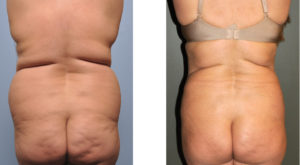
To help make the liposuction of fat easier, reduce blood loss and help with immediate after surgery discomfort, all liposuction procedures today are done with the pretreatment infusion of a wetting solution, often called a Hunstad solution. Through hydrostatic tissue distention and the use of lidocaine and epinephrine drugs, liposuction has become a more effective procedure. But using such a solution does expose the patient to elevated levels of lidocaine and epinephrine, which like all drugs have potential side effects.
While many principles and methodologies of liposuction have been studied over the years, certain concepts of the effects of liposuction are ingrained as truths. This is why it is refreshing when a study appears that revisits some of the established concepts of liposuction in a scientific and quantitative manner. In the September 2012 issue of Plastic and Reconstructive Surgery, a paper was published entitled ‘ Prospective Study of Lidocaine, Bupivacaine and Epinephrine Levels and Blood Loss in Patients undergoing Liposuction and Abdominoplasty’. These study results come from a single plastic surgeon’s practice and looked at 322 consecutive cases of liposuction and/or abdominoplasty. As the title suggests, drug levels and blood loss were assessed in the patients.
The study highlighted some significant findings. In over 300 cases, no incidences of pulmonary emboli or deaths occurred. One infection (0.3%) and one deep vein thrombosis (DVT) occurred. (0.3%) No lidocaine or epinephrine toxicity was seen in any patient. The maximum dose of lidocaine was 37.7mg/kg. (35 mg/kg has been shown to be perfectly safe when infused in dilute form in fat) Lidocaine levels peaked 8 to 12 hours after being infused. The maximum dose of epinephrine was 10mg (0.13 mg/kg) and it peaked 2 to 4 hours after infusion. Hemoglobin levels dropped nearly 2 grams one day after liposuction. Abdominoplasty surgery resulted in nearly 300cc of additional blood loss. The proportion of the infused wetting solution in the aspirate (what is seen in the collection canister) was just over 10%.
What does all this mean? Morbid and lethal risks of liposuction and abdominoplasty are very rare. Risks of infection and DVT are very low. Lidocaine levels in super wet infusions for liposuction are within safe limits and do not exhibit toxicity. The peak levels of lidocaine do not occur until much later than one would think due to the effects of the epinephrine. Epinephrine levels of 1:500,000 were found to be safe and resulted in no elevation of liver enzymes. (the traditional use of epinephrine in Hunstad solutions is 1:1,000,000) Blood loss is more significant than it appears in the liposuction collection canister, which is usually 1% to 3% . The blood loss after liposuction is up to 10% of the total liposuction aspirate and largely occurs from bleeding into the treated tissue after surgery. This is higher than previously thought.
From one of the best liposuction studies ever performed, the conclusions are:
1) Liposuction can be very safely performed when the removal of fat aspirate is less than 5000cc and the wetting solution is of a similar volume. (superwet technique)
2) Epinephrine doses in the wetting solution can be safely done at 1:500,000. This may help reduce blood loss and allow the local anesthetic effects of lidocaine to persist longer after surgery.
3) Blood loss is more significant from liposuction than is commonly perceived. Patients should have good hemoglobin levels before combined liposuction and abdominoplasty surgery.
4) More of the infused wetting solution stays behind (not suctioned out) than what one would think.
Dr. Barry Eppley
Indianapolis, Indiana


